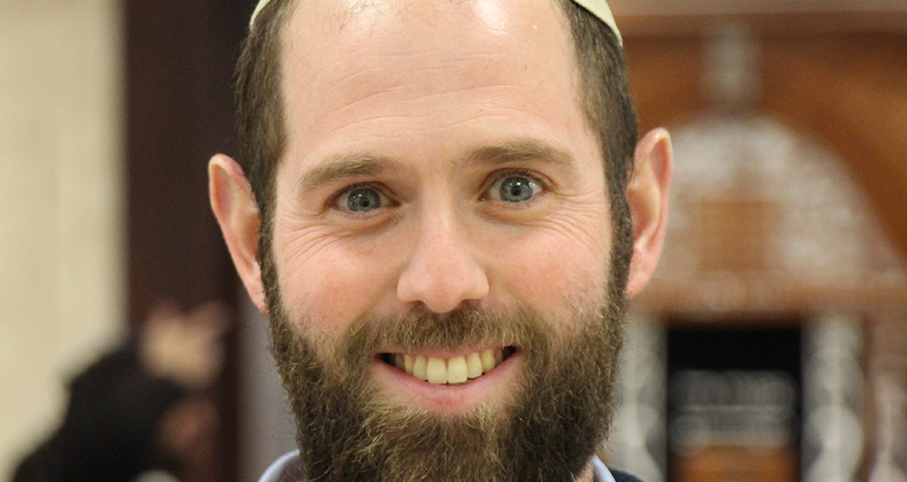Beit Midrash
- Jewish Laws and Thoughts
- Jewish Thought
- Subjects of Jewish Thougts
1) I received some figurines from a museum shop which resemble various Egyptian gods. May I keep them to demonstrate at the Seder what silly gods the Egyptians worshipped?
2) My non-observant, but very respectful, father has a rather eclectic collection of various art objects -- including a four-foot-tall bronze statue of some Hindu figure. Do I have any obligation to say or do anything?
Zev, a chess enthusiast, asked me the following:
3) "I just received a present of a very nicely carved chess set. Unfortunately, the king has a cross. May I keep the set as is, or must I break off the cross on the king?"
Jack, an archeology student, sends me an e-mail:
4) "As part of my studies, I will be joining a dig. What happens if we find an idol? Even though it is not worshiped today, would the mitzvah of destroying it still be applicable? Also, in examining the object, one has to gaze on and familiarize himself with the piece. Does this violate the prohibition of gazing at avodah zarah?"
Each of these actual shaylos that I was asked revolves around the question of whether a Jew may own an item that has idolatrous overtones, even though he has no idolatrous intention. Is this lack of intent sufficient to avoid any Torah violations?
As we will see, there are several potential shaylos that we must analyze to determine the halacha:
I. May a Jew look at an icon?
II. Does it make a difference whether it is still worshipped?
III. May a Jew own an icon that represents an idol, even if it was never worshipped?
IV. If owning this icon infringes on no other prohibitions, does it violate maris ayin, doing something that arouses suspicion?
In Parshas Eikev, the Torah commands: "Burn their carved gods in fire. Do not desire and obtain the silver or gold that is upon them, lest you become ensnared by it, for it is repugnant to Hashem your G-d. Nor shall you bring this abomination into your house; rather, you should ban it. Abhor it and revile it, for it is banned." 1
This pasuk includes the following mitzvos:
1. Burn their carved gods in fire commands us to destroy avodah zarah. 2
2. Do not desire and obtain the silver or gold that is upon them prohibits benefit even from the decorations on an idol. 3 One may not own or sell idols, even if one thinks that they are the silliest things on earth, since he gains financially or in other ways.
3. Nor shall you bring this abomination into your house bans bringing an idol into your house and also forbids benefiting from idolatry, 4 since this is considered "bringing" the idol into your use and possession.
4. Furthermore, the Torah states al tifnu el elilim, do not turn to idols. 5 What is included in this proscription? Does it include looking at idols or images that represent idols?
The Sifra 6 quotes two interpretations of this verse. One prohibits studying idolatry, including its beliefs and how the idol is worshipped. A second approach understands the verse to forbid even looking at idols. 7 The poskim rule that both approaches are accepted halacha: the Torah thus prohibits studying idolatrous practices and beliefs, as well as looking at icons. 8 (The Rambam states that one receives malkus for violating this prohibition. 9 Therefore, someone who violates either interpretation of this mitzvah is halachically invalidated for providing testimony, even if he has no idolatrous intent.)
DOES THAT MEAN THAT EVEN GLANCING AT AN IDOL IS A TORAH VIOLATION?
The Magen Avraham 10 explains that the Torah prohibits only gazing at an idol, but does not prohibit glancing at it: seeing it is not prohibited, but intentionally looking at it is.
THE ICON OR ONLY THE IDOL?
Is it prohibited to look at articles that merely represent the actual idol, even though they are not themselves worshipped (icons), or is the prohibition limited to idols that are themselves worshipped? The answer to this question depends on how one understands the following passage of Gemara.
One may not look at the image itself, even on weekdays, because one thereby violates ‘Do not turn to idols.’ How do we derive this law from this verse? Rav Chanin explained, ‘do not face figures created by man.’" 11 This unclear passage implies that one may not look at any image, even one not worshipped.
On the other hand, elsewhere, the Gemara praises the Talmudic scholar Rabbi Menachem ben Sima’ie as a holy man, because he never looked at the images that one finds on coins. 12 This implies that an especially holy person does not look at likenesses, but a person who observes halacha without stringencies may do so. Thus, we are faced with a seeming inconsistency: one Gemara statement prohibits looking at any image, the other implies that one may (although it is meritorious to avoid it).
The rishonim suggest many different approaches to explain the Gemara in Shabbos. Here are two differing approaches that resolve the above quandary in very different ways:
1. First opinion: Some contend that the prohibition of looking at an image applies only to one that was manufactured for worship, and the image on a coin is not worshipped. According to this opinion, although the Gemara seems to derive that one may not look at any portrait or image whatsoever, it really means to limit the prohibition to actual idols. Nevertheless, it is praiseworthy not to look at any portraits or images at all. 13
2. Second opinion: Others understand that one may not look at any image whatsoever. 14 If this approach is correct, why does the Gemara in Avodah Zarah imply that Rabbi Menachem ben Sima’ie’s acts are meritorious, but not required, when the Gemara in Shabbos prevents looking at any image?
To answer this question, some authorities explain that although it is prohibited to look at any image, this applies only when one's attention is diverted to the image. Since coins are in common use all the time, glancing at them is not considered a diversion. 15
EGYPTIAN FIGURINES
Whether one may own a replica of an ancient Egyptian icon depends on the above-quoted dispute among the rishonim. According to the first opinion quoted above, since these icons were meant for educational purposes, rather than to encourage worship, it is technically permitted to look at them (although it is meritorious to refrain). On the other hand, according to the second opinion, even looking at these pieces violates the Torah’s mitzvah, since only items as common as coins are excluded. Certainly, owning these items is problematic.
How does the Shulchan Aruch adjudicate this question?
Surprising as it may seem, the two statements of Shulchan Aruch appear to contradict one another. In Orach Chayim 16 he cites the above-mentioned Gemara in Shabbos in a way that implies that he prohibits looking at any image at all. On the other hand, in the laws on idolatry, he limits the prohibition to looking at bona fide, worshipped idols. We should also note that there he cites a different reason to prohibit looking at idols: enjoying the artwork is considered benefiting from idolatry. 17
However, the major commentators on the Shulchan Aruch in both places note that the accepted practice is to prohibit only icons manufactured for worship. 18
COLLECTING ICON STAMPS
A stamp dealer-collector asked Rav Moshe Feinstein whether he could own, buy and sell stamps that contain crosses and other idolatrous images. Rav Moshe ruled that since stamps are a common item, like coins, one may own or sell their images, and may also look at them. Rav Moshe mentions that it is meritorious not to, presumably for the same reason that Rabbi Menachem ben Sima'ie of the Gemara avoided looking at coins. 19
ZEV’S CHESS SET
According to the reasons we have applied so far, Zev may be able to keep his fancy carved chess set. No one worships the cross on the king, and one could, perhaps, argue that this is familiar enough that no one is led astray by these pieces. As mentioned above, it is meritorious not to have any images at all, and certainly not to have anything that is reminiscent of idolatry. Thus, there is good reason for the custom to break off the cross of such chess pieces.
Miriam’s Dad’s Hindu statue involves a more serious halachic problem. Firstly, if this image was manufactured for worship, all opinions prohibit looking at it and having any enjoyment from it. Furthermore, if it was once worshipped, then several other Torah violations are involved, including that of having an avodah zarah in one’s house and benefiting from avodah zarah (because he enjoys looking at the artwork). In addition, there is a mitzvah to destroy it.
SHOULD WE ASSUME THAT THIS STATUE WAS WORSHIPPED?
Are we required to assume that the Hindu statue was worshipped? After all, it looks as if it was created as a collector’s item, not for worship.
The answer is that if this statue was manufactured in a place where images of this nature are worshipped, he must assume that this icon is a bona fide idol. 20
IS IT MARIS AYIN?
In addition to the halachic problem of looking at these idols, the Gemara raises an additional factor to take into consideration: Is there concern that someone might suspect that the owner worships them. 21
Are we, today, still concerned that someone might worship idols?
The answer to this question goes back to understanding the basics of maris ayin. Doesn’t the concept of maris ayin conflict with the mitzvah of judging people favorably? If everyone always judged others favorably, there would never be a reason for maris ayin. Yet, we see that the Torah is concerned that someone might suspect a Torah Jew of violating a mitzvah and judge him unfavorably.
Indeed, although people are required to judge us favorably, we are also not permitted to do something that others may misinterpret as violating halacha. Therefore, a person’s actions must be above suspicion. In other words, a person should not rely on his sterling reputation to allow him to do something that might be misinterpreted.
However, if circumstances dictate that people will assume that nothing wrong was done, there is no violation of maris ayin. (I have written a different article entirely on the subject of maris ayin in which I discussed these details.) Indeed, even in cases where there was maris ayin at the time of the Gemara, the prohibition is rescinded in places and times when the concern no longer exists.
Concerning maris ayin and the prohibition of avodah zarah, the poskim conclude that if no one worships these icons anymore anywhere in the world, one need not be concerned about suspicion that they are being worshipped. 22 As long as these idols are worshipped somewhere , one must be concerned about maris ayin.
Thus, it makes a difference whether this particular idol is still worshipped somewhere in the world. Since, unfortunately, Hinduism is still being practiced in the world, one may not own an idol that they might worship, because of the prohibition of maris ayin, even if no other prohibition to its ownership exists. On the other hand, since no one worships the ancient Egyptian idols any more, it is not maris ayin to own these figurines.
TEACHING ANCIENT RELIGIONS
I mentioned above that the Sifra rules that studying idolatry, including the religious beliefs and how the idol is worshipped, is prohibited min hatorah as part of the mitzvah of al tifnu el elilim, do not turn to idols.
Does this include studying ancient religions or archeology? Does this prohibit reading mythology as a form of literature?
In Nisan 5740 (1960), Rav Yehudah Parnes, a prominent Rosh Yeshivah, asked Rav Moshe Feinstein a shaylah regarding an observant public school teacher, whose required ancient history curriculum included teaching the beliefs of ancient Greece and Rome. Rav Parnes inquired whether the fact that these religions are not accorded respect in the modern world validates studying and teaching their beliefs. Do we therefore permit teaching these religions, since one is pointing out how invalid they are, or is this teaching and studying still prohibited?
Rav Moshe rules that the prohibition of studying idolatry exists, regardless for what reason one studies the religion. This also prohibits reading mythology that includes idolatry, even as a study of ancient literature.
However, Rav Moshe contends that the Torah prohibits studying only what is authored by a proponent of the religion. One may study something written by someone who scoffed at the religion, just as we see that even the Torah sometimes describes the way idolaters worshipped in order to ridicule the practice. Rav Moshe rules that one may study these subjects only if the teacher derides their beliefs and does not have the students read texts written by those who believe in the idols.
Rav Moshe points out that the students may even benefit from this instruction, if they realize that, although most of the world’s population once accepted these ridiculous beliefs, this does not demonstrate that they are true. Similarly, the fact that millions of people accept certain other false notions as true is not evidence of their veracity. 23 Truth is not determined by democratic means!
In conclusion, in reference to our original questions, Miriam may save the Egyptian figurines, although it is praiseworthy to dispose of them, but her father may not hold onto his Hindu statue, even as art, or in order to mock it. Zev may keep his chess set. Jack is prohibited from gazing at an idol that he unearths, and furthermore he would be required to destroy such an idol. Since I presume this could get him into trouble with the authorities, he would have a different question – is he required to destroy the idol, knowing that he may get into legal trouble? This is a topic for a different time.
Our belief in Hashem is the most basic of mitzvos. Praiseworthy is he who stays far from idols and their modern substitutes and directs his heart to Hashem.
^ 1.Devarim 7:25-26
^ 2.Rambam, Hilchos Avodah Zarah 7:1.
We should note that this mitzvah is also mentioned in Devarim 12:2.
^ 3.Sefer HaChinuch, Mitzvah 428
^ 4.Rambam, Hilchos Avodah Zarah 7:2
^ 5.VaYikra 19:4
^ 6.VaYikra 19:4
^ 7.Yerushalmi, Avodah Zarah 3:1
^ 8.Rambam, Hilchos Avodah Zarah 2:2; Sefer HaMitzvos, Lo Saaseh #10; Chinuch #213
^ 9.Sefer HaMitzvos, Lo Saaseh #10
^ 10.307:23
^ 11.Shabbos 149a
^ 12.Avodah Zarah 50a
^ 13.Tosafos, Shabbos ad loc.
^ 14.Rashi; Tosafos Rid
^ 15.Tosafos, Avodah Zarah 50a
^ 16.307:16
^ 17.Shulchan Aruch, Yoreh Deah 142:15, quoting Rabbeinu Yerucham
^ 18.Shach; Magen Avraham
^ 19.Shu't Igros Moshe, Yoreh Deah 1:69
^ 20.Rama, Yoreh Deah 141:3 and Shach ad loc. 17
^ 21.Avodah Zarah 43b
^ 22.see Rama, Shach, and Gra, Yoreh Deah 141:3
^ 23.Shu't Igros Moshe, Yoreh Deah 2:53
This Shiur is published also at Rabbi Kaganof's site
Common sense
Rabbi Berel Wein zt"l

Introduction to the Laws of Chatting
Rabbi Yuval Sherlow | Tammuz 8, 5761
Why Must I be Religious to be a Moral Person? - Part I
Rav Kook, Musar Hakodesh
Rabbi Ari Shvat | 5769























